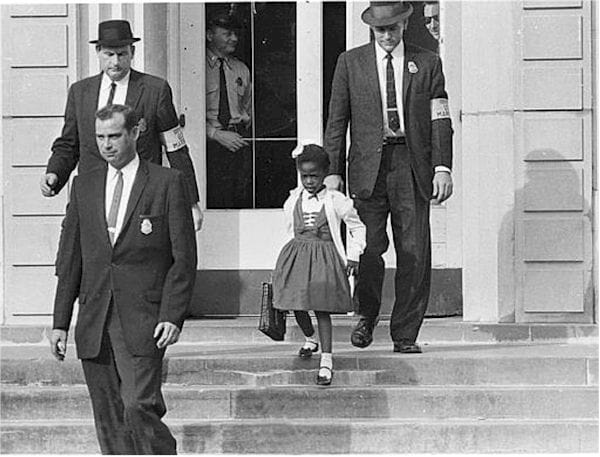On May 17, 1954, the U.S. Supreme Court banned segregation in public schools, ruling that separating students by race was unconstitutional. In the coming years, even with staunch opposition in many places, Black and White students slowly found themselves sitting beside each other in classrooms. By 1970, my mom was one of those children at a junior high school in my hometown, Charlotte, N.C. I learned about both the struggle and promise of integration through her memories of those times: She told me that White students would tell her and her Black classmates they shouldn’t be there, or they would toss around disparaging racial remarks. But the Black students corrected them and defended their right to the same educational opportunities. Those early experiences helped to humanize one another and build relationships they would have never established without that court order.
But more than 60 years later, recent news stories highlight examples of schools across the country that only appear diverse and integrated. And appearances, we know — like averages — mask true inequities in access and opportunity. Look at Howard County, Maryland, and Evanston, Illinois, where White students are disproportionately enrolled in advanced courses and Black students are disproportionately enrolled in regular and remedial classes.
These stories are not isolated incidents. They illustrate a larger issue across the nation. Take, for example, Advanced Placement courses, which expose high school students to more rigorous material and require the critical thinking needed to be successful in college. According to the most recent “AP Report to the Nation,” Black students only made up 9.2 percent of AP exam-takers even though they were 14.5 percent of the 2013 graduating class. We found similar results in a 2013 analysis that showed more than half a million low-income students and students of color are “missing” from AP and International Baccalaureate courses (meaning at least 500,000 more of these students would have been enrolled if they had the same enrollment rates as their White and Asian peers).
This problem can’t be explained away by gaps in student ability. According to data from Palm Beach County, even when students of color and White students have similar test scores, those of color are far less likely to enroll in advanced courses. Additionally, our “Falling Out of the Lead” report showed that nationally, low-income students and students of color who are high-achieving when they enter high school are often not privy to the types of rigorous instruction and high-quality support that leads to better preparation and success in college.
If the problem isn’t a disparity in student ability, then what is it?
It’s schools that set up processes and systems that disproportionately shut out students from high-quality learning opportunities. It’s cultures that believe that only some students are destined for the rigors of AP.
But there are schools that are doing the opposite — opening enrollment to AP courses, eliminating barriers, and creating master schedules that promote student interest and participation — and we explore them in a forthcoming paper on AP access and success. The result we’ve seen in these schools? Proportionate rates of access and success among the student body, regardless of race.
Desegregation isn’t just about placing students of all races together in the same schools; it’s about setting high expectations for all students and ensuring equitable access to the opportunities that will place them on the right track to postsecondary success. We should all celebrate and learn from schools that are providing equitable opportunities like the ones we visited and will profile for this forthcoming report. That’s how we fulfill the legacy of Brown v. Board.




